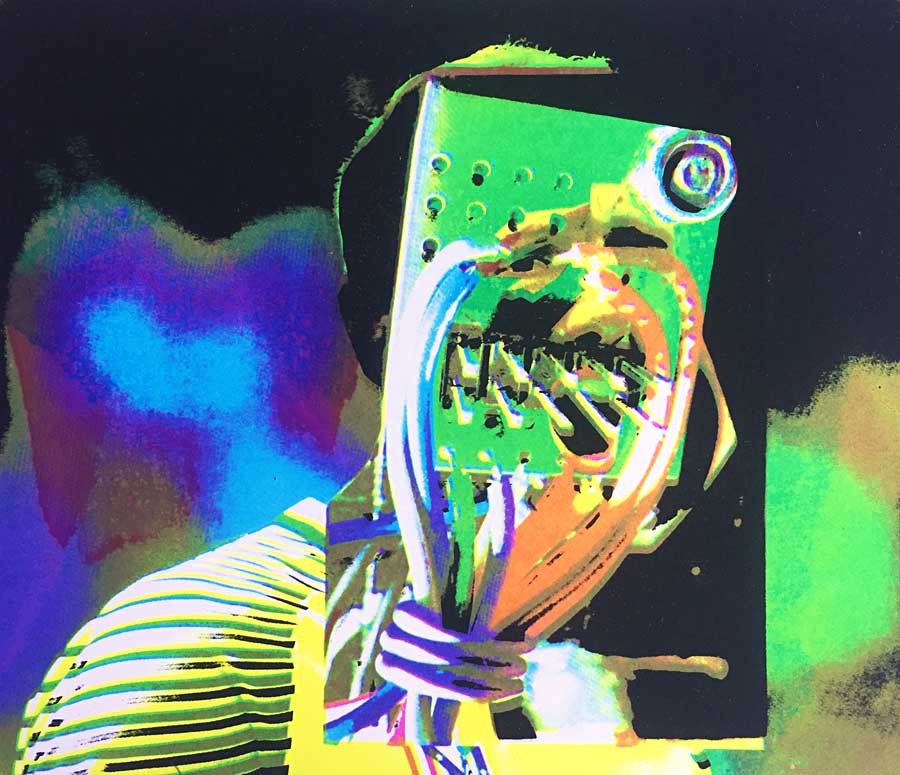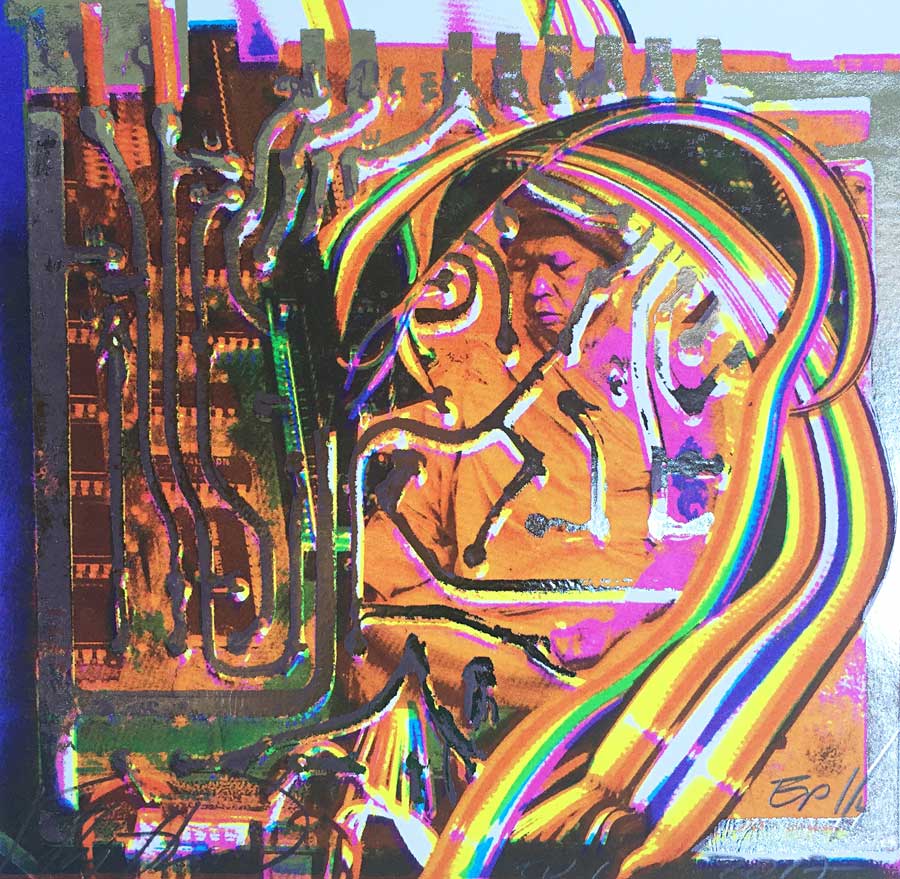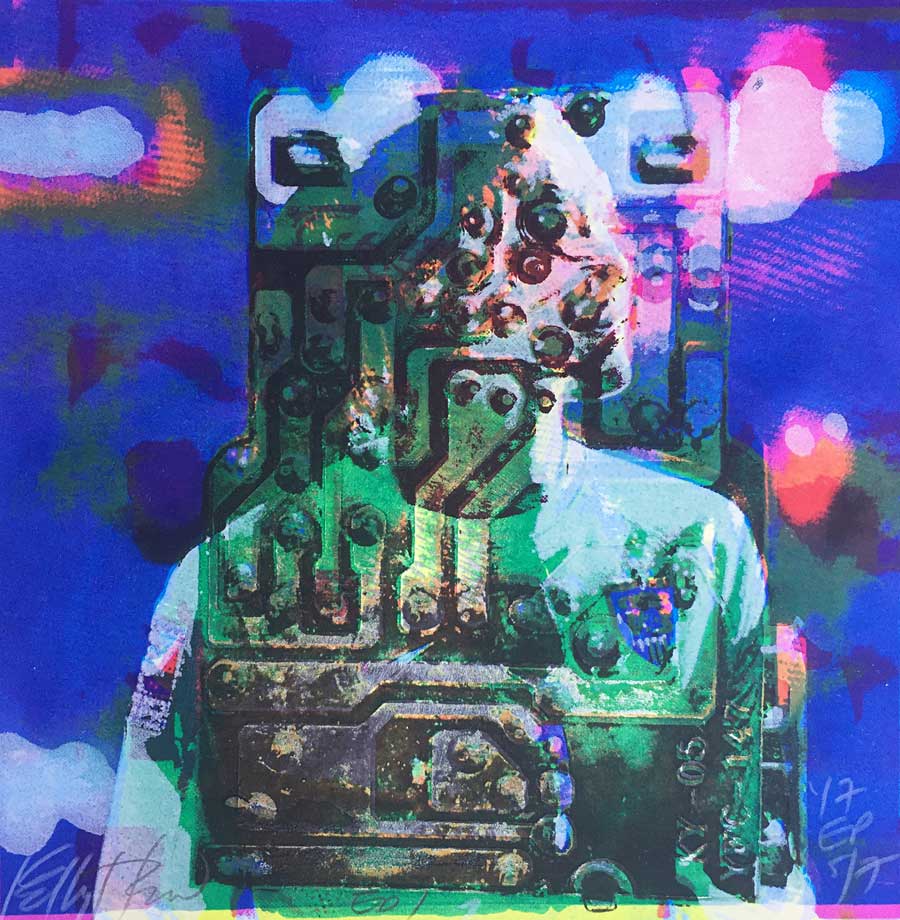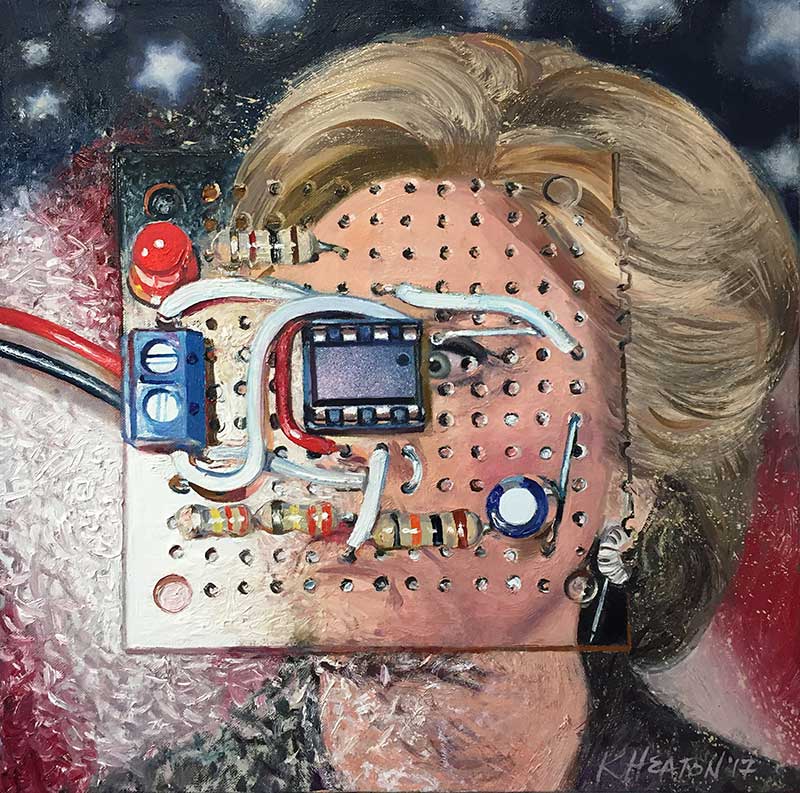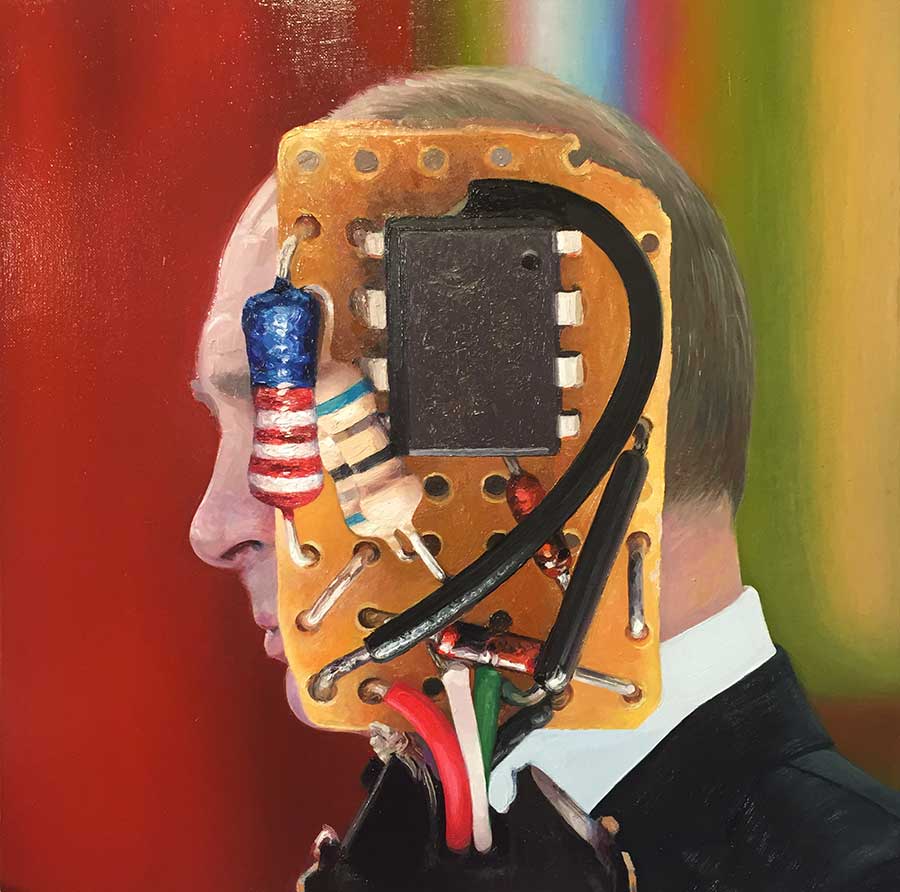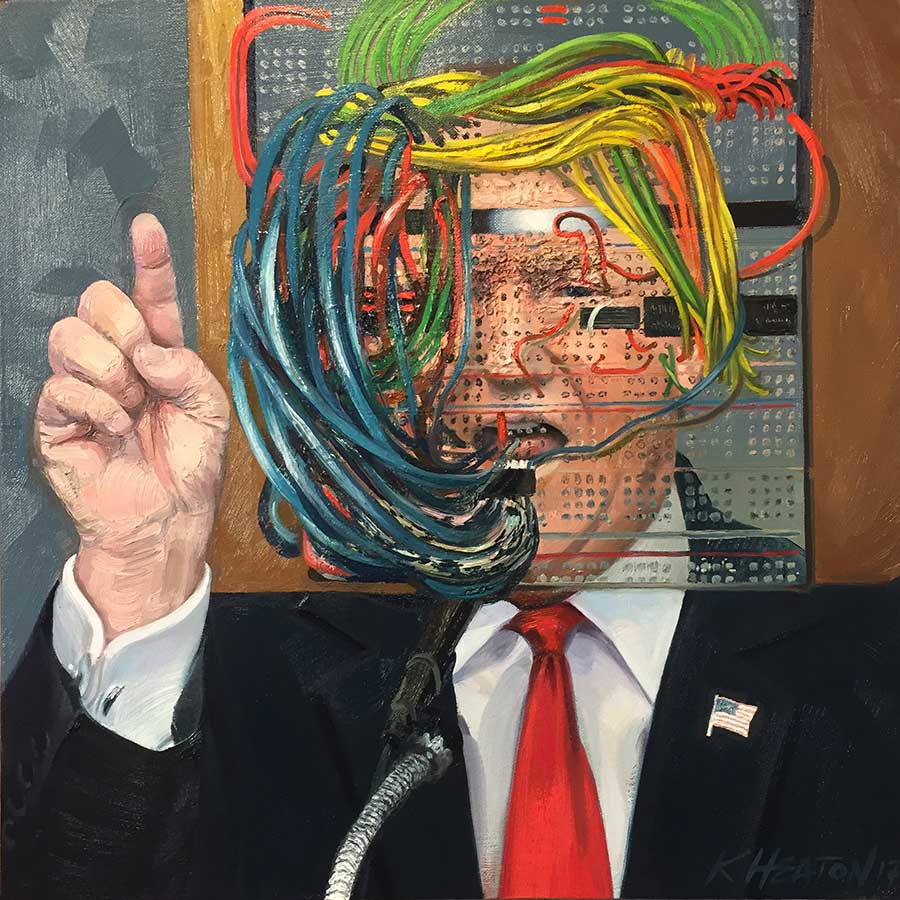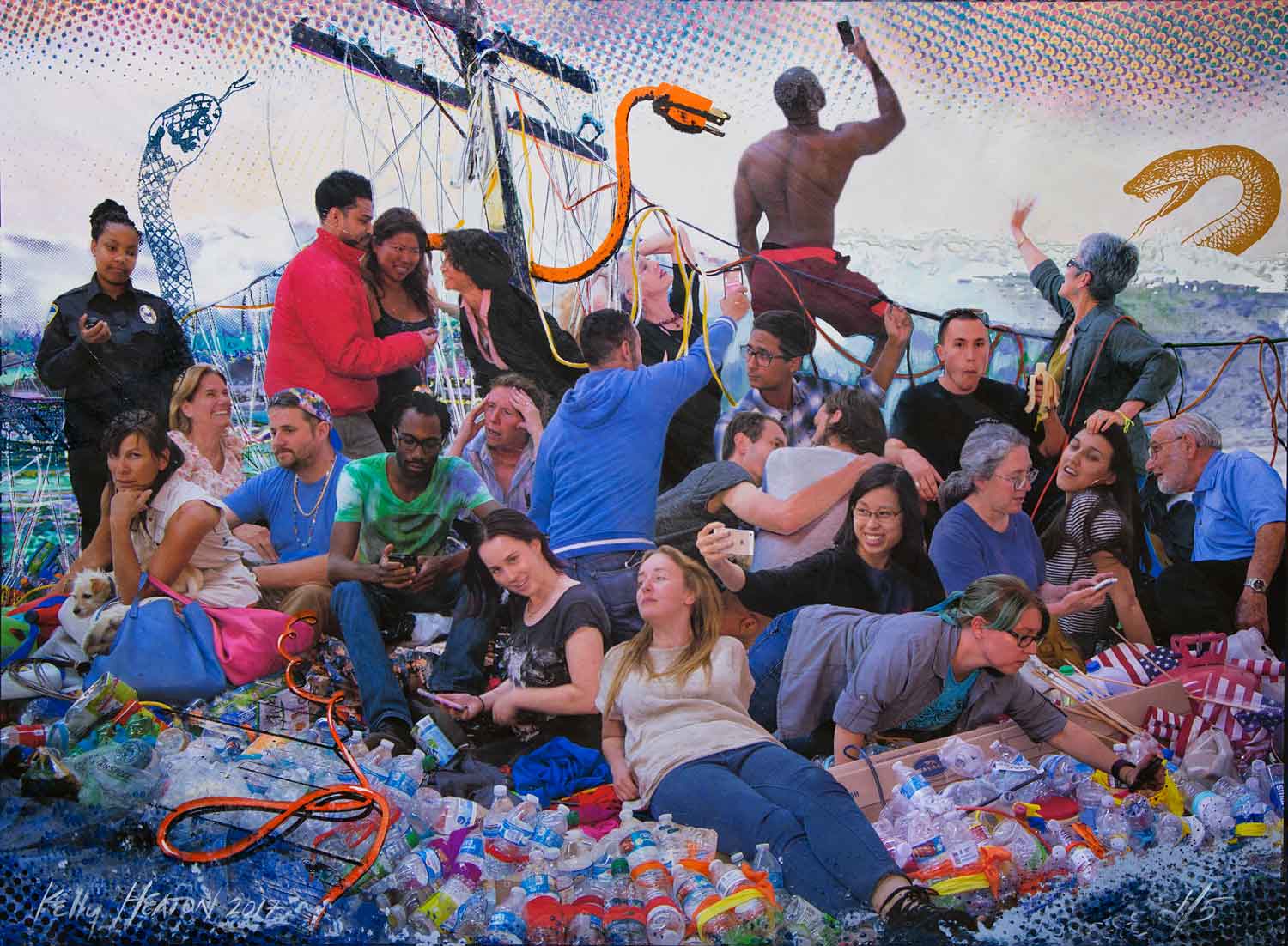- My online shop is live!
- Bidding for #1/5 of The Raft of Medusa (2017) begins on August 10th. Visit the 2017 online auction to raise money for the Leonardo DiCaprio Foundation and climate change research.
- Don't miss Art on the Front Lines at Ronald Feldman Fine Arts through August 19th
The art of screen printing /
Imagine Andy Warhol with computer graphics software and an expanded palette of ink -- contemporary screen printing is a powerful medium for translating digital images into physical works of art.
I learned to screen print during my 2017 summer residency at Otis College of Art and Design in Los Angeles. Lucky me -- printmaking is a fantastic way to make digital art tangible. Unfortunately, mechanical reproduction has muddied public perception of "printmaking." Industrial printing and artist printmaking are entirely different things -- machines pump out copies that are all the same, whereas artists have their hand and eye in every step of the image creation. Each print is hand-made and original.
My screen printing process begins with a digital master file that I separate into singe color layers. Sometimes, I make my layers using traditional CMYK separation. Other times, I manually trace or filter areas of the image for "spot color" printing. Printing a spot color means to choose a color for aesthetic reasons (as opposed to compositing photographic realism). This is how I add visual effects that are more painterly, and it's how I print an adhesive layer for metallic foil. In contrast, traditional CMYK printing (think magazine and newsprint) relies on specific combinations of ink, transparency, and half-tone angles. I like to combine both methods -- traditional CMYK and spot colors. I enjoy mixing silk screen, digital printing, and painting, but this post will focus on screen printing only.
Once I have teased apart the different color layers of my image, I convert each layer to grayscale, adjust for contrast, and convert to half-tone. A half-toned image is made of tiny dots that give the illusion of grayscale (or printed color value) according to the density of the dots. Each half-toned layer corresponds with a single screen. Using a special inkjet printer with opaque black ink, I print my digital image onto transparency film and use it to burn my screen. (Note that it can be confusing to tell layers apart after they have been converted to black and white, so I always mark the file name on the edge. Sometimes, artifacts from my transparency labels will appear in the borders of my prints.)
Below are the seven different transparencies that I used to burn screens for Transhuman Goalie (2017), 1st edition.
Master file for Transhuman Goalie (2017). This multi-layered Adobe Photoshop image was used to create seven half-tone transparencies. What you see here is a composite of all of the digital image layers in CMYK bitmap format.
With my screens burned, it is time to register my image. Depending upon what I'm trying to do, registration can be tedious and time-consuming. I'll use a reference print on acetate as well as pins and tabs - the later being my new favorite technique for printing multiples. I invite a little misalignment because it adds visual interest that you don't see in a machine print or photograph. Shifts in registration can also suggest movement or vibration if done intentionally.
Next I mix my ink. For CMYK, I add a lot of transparent base and do tests to evaluate the additive print effect. I treat spot colors like paint. I like the opacity of Super Cover textile inks by Permaset. Otherwise, Speedball works well for transparent layers. I use water-based ink for environmental reasons. I put a little retarder (<5%) in everything.
Now it's time to print. For CMYK, I start with yellow and proceed to the progressively darker colors (magenta, cyan, and black). The ink has to dry between each print layer, so I use this time to clean my screen and equipment. I also use drying time to remove the stencil from my screen, reapply emulsion, and burn the screen with a different image layer. Screen printing involves careful planning and multi-tasking because there's no time to dawdle when the screen is flooded with ink (it dries rapidly and clogs the mesh).
Thank you to everyone who has helped me learn the art of screen printing: Nick Mohammed, Charles William Carroll, Jamie Russom (all at Otis) and Carolyn Hartmann of Open Studio DC. Thank you to Creative Capital, Ronald Feldman Fine Arts, Otis College of Art and Design, and David Burns for your generous financial support. Thanks also to Juliana Coles for your studio camaraderie during our learning process!
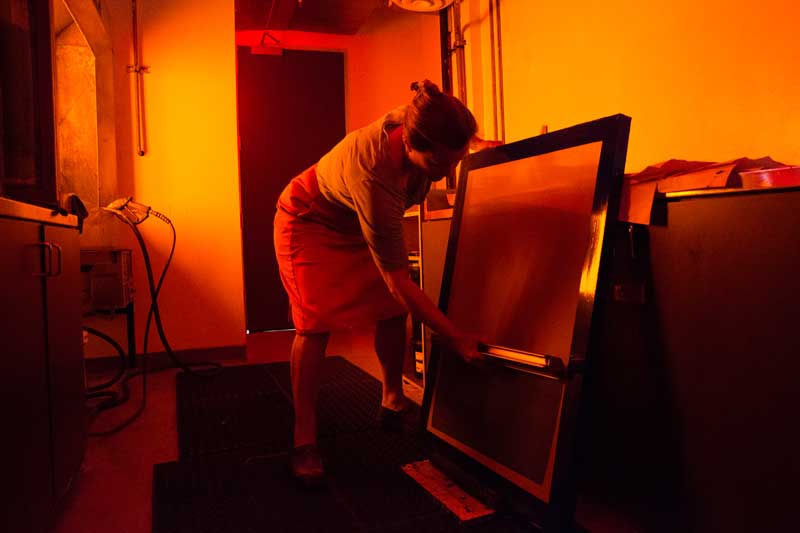
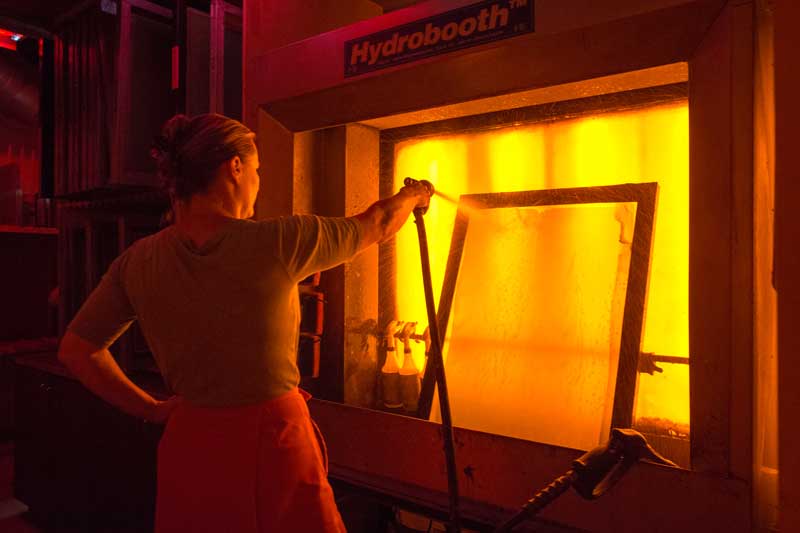
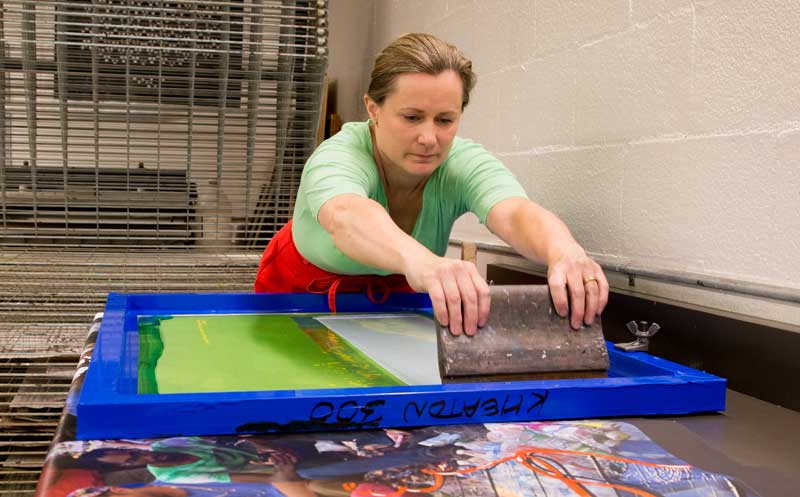
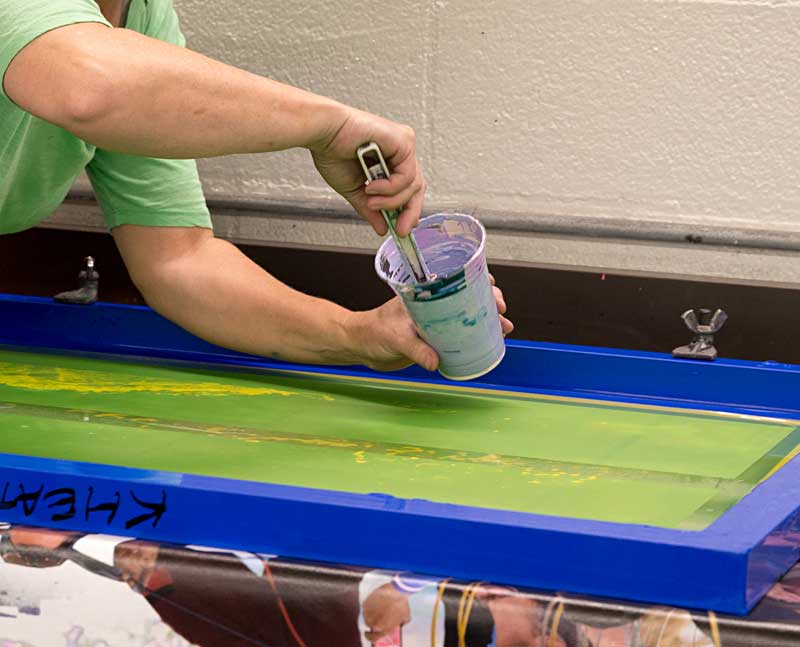
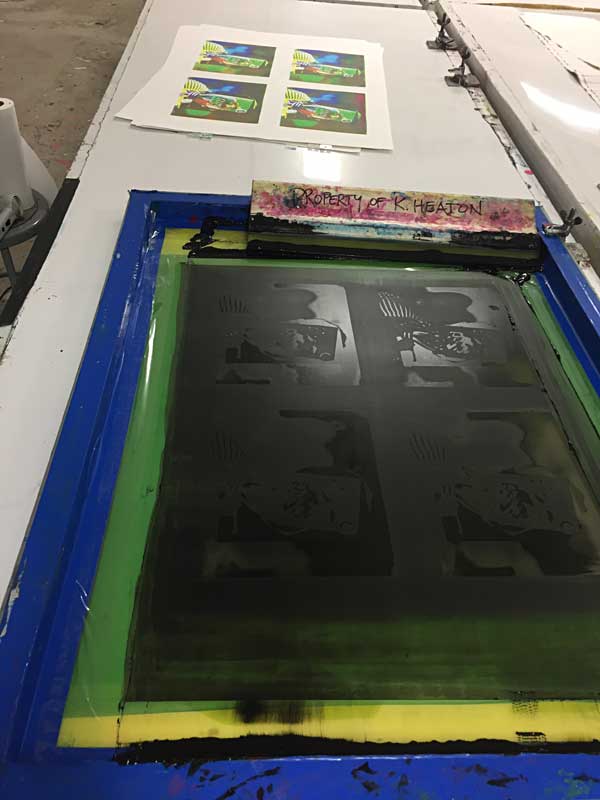
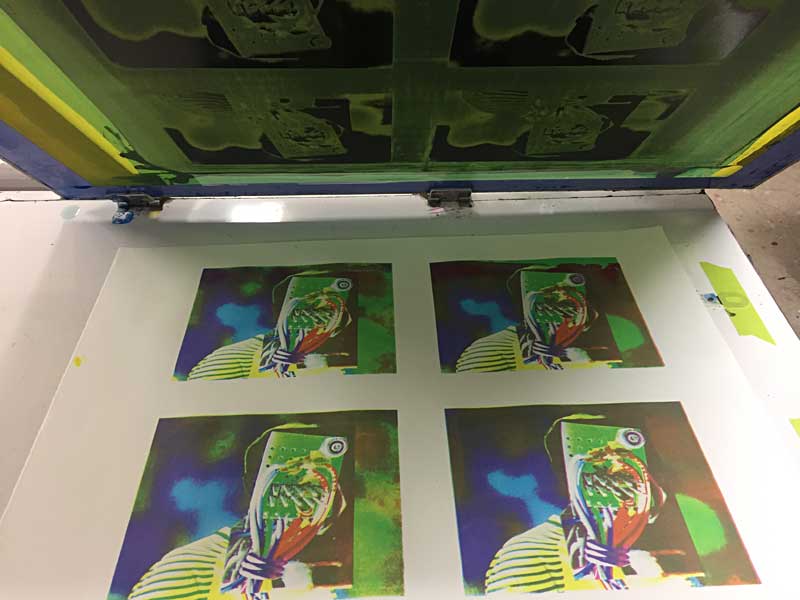

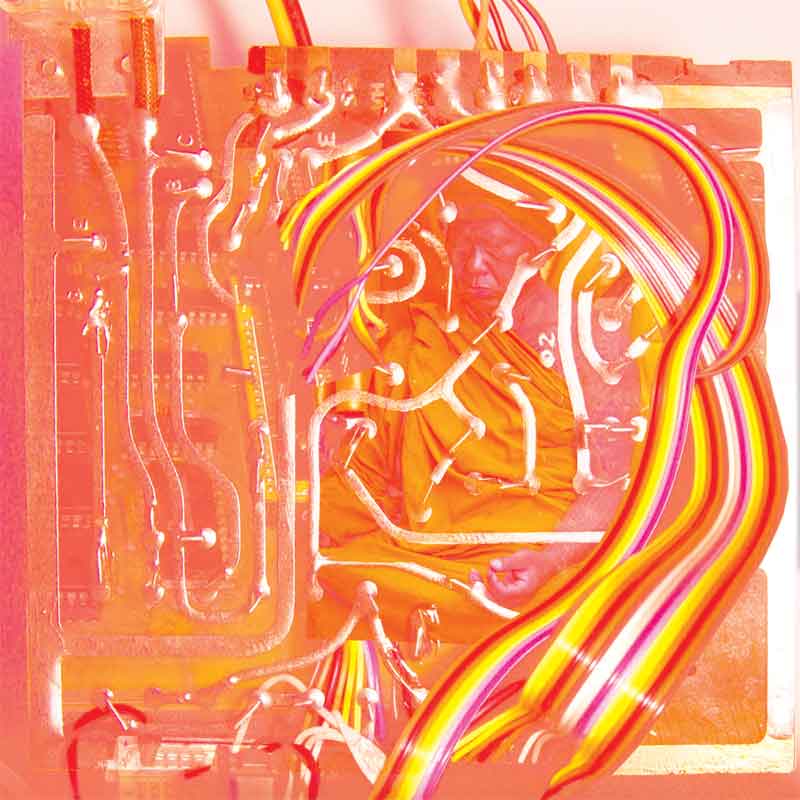

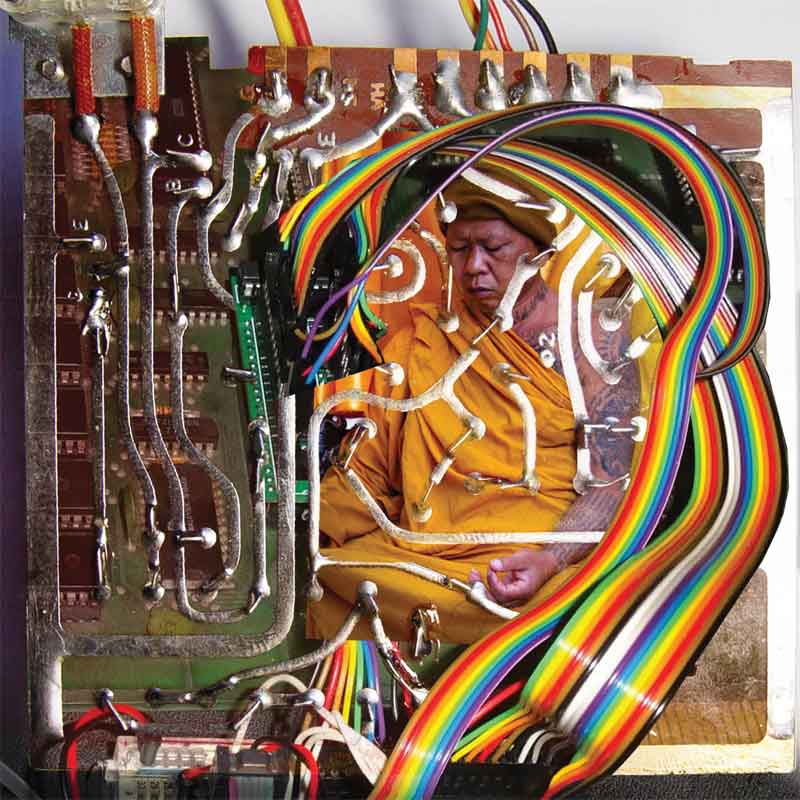
Tribal Leader /
Tribal Leader, 2017. Digital sketch for print
A tribute to Leonardo DiCaprio - thank you for all that you do for art and our natural environment.
Enoch's Prophecy /
Enoch's Prophecy, 2017. Digital Sketch for print production
Enoch was the grand father of Noah. He saw it coming.
Transhuman Goalie /
Transhuman Goalie, 2017. Digital sketch
From Wikipedia: "Transhumanism (abbreviated as H+ or h+) is an international and intellectual movement that aims to transform the human condition by developing and making widely available sophisticated technologies to greatly enhance human intellect and physiology.[1][2]"
What does it mean to enhance the human being? In my experience, weaknesses are a gift for personal reflection and spiritual growth. Will enhanced people be more superficial; and if so, what is "enhanced" about that?
Black Power Capacitor /
Black Power Capacitor, 2017. Digital sketch (photo collage)
Speak your truth, digitize it, post it online, and change global consciousness. The power of digital is political power. For what do you stand?
Going Online /
Consider the physical and software prep work that we do to create our social media presence. As the Internet progressively invades our psyche, online identity is a major component of ego. Are we the same person in physical reality as we are online, or is there a new dichotomy of self? Where is the real me?
The Kiss /
The Kiss, 2017. Digital image (sketch) for mixed media production.
I continue to sketch in software to build up a portfolio of images, the best of which I will select for mixed media production. I am meanwhile developing a new technique that combines inkjet printing, image transfer, screen printing, and layered acrylic painting. My goal is to reproduce a multi-layered Photoshop aesthetic but with trace of the a human hand. Inkjet printing alone is not enough for me.
I've been studying Imago relationship theory lately. My readings inspired this image. Here's a summary of Imago pulled from Wikipedia:
"Imago therapy focuses on collaboratively healing childhood wounds couples share.[5] According to Hendrix and Hunt, the human brain has a compelling non-negotiable drive to restore feelings of aliveness and wholeness with which people came into the world.[9] It is believed by imago therapists that a person's brain constructs an image of characteristics from their primary caretakers including both their best and worst traits.[10] The brain's unconscious drive is to repair damage done in childhood, needs not met, by finding a partner who can give us what our caretakers failed to provide.[9] This is why traits of a future partner often reflect our parents' traits. Our unconscious drives towards this to seek healing and to resolve unresolved childhood wounds, in order to grow. In this way, wounds received by a person, from their parents, tend to be re-stimulated by new adult partners and potential partners. The re-stimulation triggers old, unresolved emotions. Both people in the relationship can learn how to heal one another, and appreciate each other for the person they are--and--it takes time. Couples must engage in a specific type of dialogue for Imago therapy to work. The conscious self may not be able to see and understand clearly the reflection of unresolved parental issues in his or her current marriage partner. Nonetheless, our unconscious connects with this person in its best (unconscious) effort to heal old wounds and allow love into your life again.[citation needed]"

